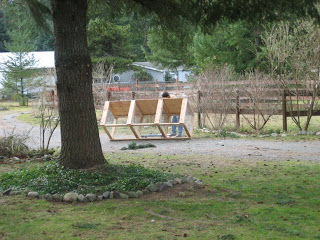In a continuing journey to educate ourselves about nutrition and eat in a healthy manner, we're always reading a book or watching a movie to both educate and motivate. Yesterday we watched a movie called Food Matters by Producer-Directors James Colquhoun and Laurentine ten Bosch. It's about 80 minutes long and is available from the library or their website, FoodMatters.tv
The main point I got from the movie was the importance of eating the proper food to provide the necessary nutrition our bodies need. By eating natural foods that are full of vitamins, minerals, and nutrients our bodies will perform better. When we suffer malnutrition, our bodies are more susceptible to viruses and diseases.
 There is discussion in the film about the food and health care system. They argue that the medical field gets paid by treating illness and they don't make money by keeping people healthy. There is also a lack of nutrition education among the general population as well as a large number of doctors. They get in the practice of taking a pill for every sickness.
There is discussion in the film about the food and health care system. They argue that the medical field gets paid by treating illness and they don't make money by keeping people healthy. There is also a lack of nutrition education among the general population as well as a large number of doctors. They get in the practice of taking a pill for every sickness.I found the movie to give good information and provide many reasons to take action against the current health system. Eating natural foods that have not been processed or modified feels like common sense to me. Right now the U.S. population spends a smaller percentage of their income on food than ever in history (less than 10%). Meanwhile, we spend more on health care for issues such as diabetes and heart disease. I'd rather spend more on the best food than going to the doctor. I enjoy eating great food and generally dislike going to the hospital. This is not to dis-credit doctors, they are amazing when it comes to surgery, rehabilitation, and saving lives, etc. The movie is just focusing on the nutrition and disease side.






























